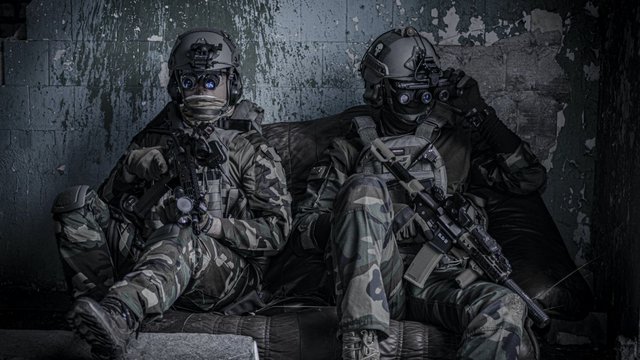Important Factors When selecting tactical boots for your feet
Whether the tactical operation is one for the military, SWAT, or law enforcement, footwear is key to ensuring that the mission - not foot discomfort or inadequate tactical boot performance - is the foremost consideration when mental focus is critical. There are many options in footwear for uniformed officials and with those options come the responsibility of determining which shoes or boots are best suited to specific work situations.

Buying Tactical Mission-Specific Footwear
When selecting tactical boots for your feet, first consider the type of operations performed. By considering the job duties and exposures to elements and other situations, an overwhelming selection of footwear can be narrowed down to a few prime selections:
• Is the typical work scenario one within a command station or behind a desk, on patrol in vehicles, and involving very little walking? If the answer is affirmative here, low cut shoes are most suited to this work environment. Low cut shoes without ankle support allow more flexing at the ankle, such as when sitting behind a desk or at the wheel of a car for prolonged periods of time. Patrol officers will likely find low-cut shoes suited to their beat, too.
• Does the job involve primarily walking, light running, and sudden movements during situations of physical confrontation? If so, mid-cut footwear provides ankle support, comfort, and help prevent injuries such as sprains.
• Is there off-pavement hiking, running, a high degree of physical confrontation, kicking and other more extreme action? In these instances, high cut boots are optimum, such as those issued to military soldiers. They are not often considered as comfortable as lower cut versions, but really protect the ankles and lower legs when it counts.
As part of missions, uniforms and footwear may come into play during the time required for response, recall or activation. If split-second dressing is required, for example, fumbling with small eyelets and laces may prove cumbersome and possibly even dangerous. Consider the dressing phase and whether arriving at the duty station occurs in a full state of dress, or if there are times when dressing in seconds arise as highly important.
Materials of footwear composition also come into play during tactical missions. Waterproof wear may be required or water-resistant coverage could be considered enough for the work detail. Plastic may melt in extreme heat, such as fires or direct sunlight. Metal may be reflective and give away position or alert subjects to positioning. Metals may also easily tear into laces or other parts of the tactical boots. Non-slip soles may be necessary, although some might make too much noise on polished floors. Ensure soles and heels will endure and are specifically designed to suit the surfaces on which the majority of the job's duties are performed.
On the inside of the shoes or tactical boots, determine whether extra inserts are needed for the expected level of interior wear and tear and to prevent blistering. If padding or extra support is needed, either seek footwear which provides that or seek gel inserts or other optional cushioning to customize fit. Toes may need to be protected by steel to prevent broken bones during combat maneuvers, in the event of physical confrontations, kicking, or items being dropped onto feet.
Finally, because of the importance of foot health during tactical operations, gaining a podiatrist's consultation may help in selection of the best tactical boot or service shoe which will prevent or alleviate problems and pain associated with back, knee, foot, or other injuries. When in doubt about the decision to be made, perhaps the best resources for advice are the other officers or soldiers within the unit.